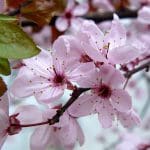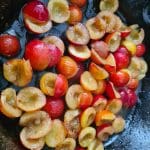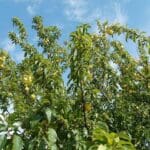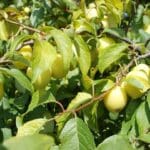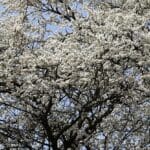Cherry Plum / Summer / Autumn / Edible
Cherry plum aren’t technically wild, but they are commonly planted in gardens, parks and hedgerows. Many people think that they are purely ornamental but they are delicious. They are a broadleaved deciduous tree and one of the first Prunus species to flower in spring. It can grow up to 8m in height.
Common Names
Cherry plum, Myrobalan plum.
Botanical Name
Prunus cerasifera
Scientific Classification
Kingdom – Plantae
Order – Rosales
Family – Rosaceae
Physical Characteristics for Cherry Plum
Leaves
The leaves are 3-7 cm in length, they are green, glossy and have fine downy hair on the underside.
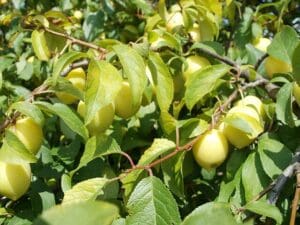
Flowers
The flowers are one of the first flowers to appear in spring (often before the leaves) They have 5 petals and are white to pale pink in colour. The flowers usually grow singularly.
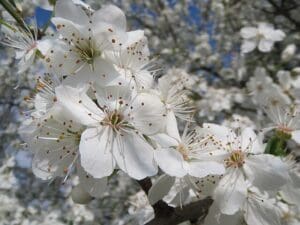
Fruit
The fruit, technically a drupe (a fruit that has seeds surrounded by rock-like pits.) are 2-3 cm in diameter, ripening to yellow or red in late summer. The fruits of all Prunus species contain one, large flat seed or ‘stone’.
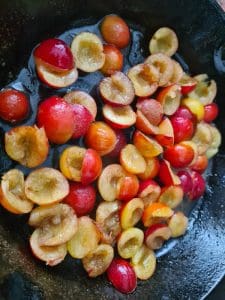
Habitat
They are native to Southern Europe and Asia but are naturalised in the UK, often found as ornamental in parks and gardens.
Known Hazards
The only toxins in cherries are in the stones. Cherry plum stones and the seeds of many other fruits, such as Pears and Plums contain amygdalin, a cyanogenic glycoside composed of cyanide and sugar. When metabolised in the digestive system, this chemical degrades into highly poisonous hydrogen cyanide. A lethal dose of hydrogen cyanide can kill within minutes.
But before you get too worried the stones need to be crushed or powdered to release the cyanogenic compounds (whole stones will pass through your digestive tracts whole). We are able to process small amounts of hydrogen cyanide, so swallowing a couple of stones would be harmless. Normal consumption is quite safe.
Could be Confused with…
Other cherries such as Bird Cherry (Prunus padus) or Wild Cherry (Prunus avium) are both safe to eat.
Edible Uses
Depending on their sweetness they are lovely eaten straight from the tree when ripe. You’ll know they are ripe when they come away from the stems easily or you’ll see fallen fruit on the ground.
Some are sweet enough to eat straight from the tree whereas some are so sour they’re only good for sloe gin style liquors, wine and jams.
Removing the stones can be tiresome, I’ve found the best way of removing them is to use an olive de-stoner that is on the handle of my garlic press.
As well as using them in desserts such as pie and crumbles they’re great in savoury recipes too.
The flowers are also edible and have a lovely sweet, spicy flavour. They are great as a garnish for desserts, added to salads or can be dried and infused in alcohol.
Notes on Herbal Uses
They are a great source of vital nutrients such as calcium, phosphate, potassium, sodium, iron and vitamins C and B, all of which are necessary for maintaining an efficient metabolism and a healthy nervous system. Cherry plums contain less sugar compared to many other fruits.
Cherry plum flowers were used by Dr Edward Bach to create a remedy for people in fear of losing control of their behaviour, and are still used in Bach Flower Remedies today.
Extra notes from the Foragers
The fruit the trees produce are plums and have no attributes of cherry (the cherry name is just a reference to the small size). However, another tree sometimes named Cherry Plum has hit the market. These new trees are hybrids of Plum and Cherry trees and produce larger fruits. They are normally sold as either Cherry Plum trees, Cherums, Plerries, or Chums and they are all edible.



